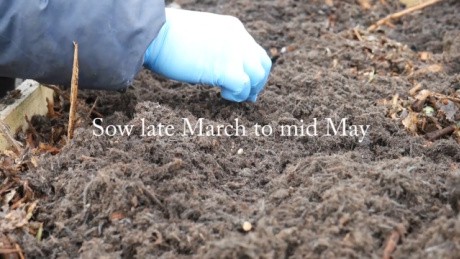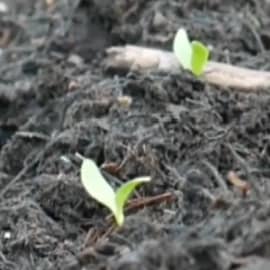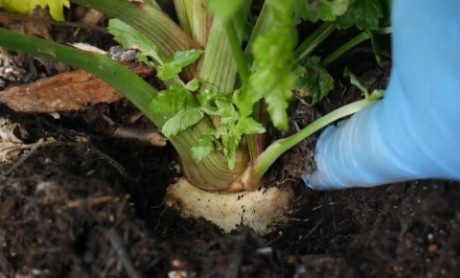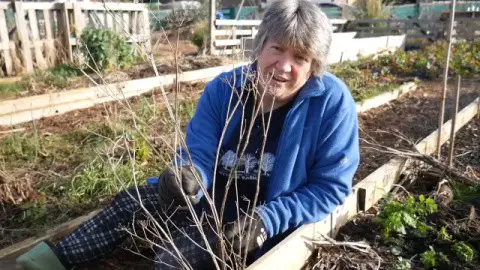How to grow Parsnips right from seed to harvest
How to grow parsnips right through from seed to harvest and beyond. We love parsnips! They are an incredibly versatile vegetable and I use them wherever potatoes are used in a recipe, except for baked jacket potatoes. When I’m looking for ways to make warm, inviting and filling meals in the winter, I use root vegetables and those with a slightly sweet taste are especially welcome. Parsnips tick all those boxes and more.
In temperate climates, parsnips can be stored over winter in the ground, so there is no need to worry about preserving them. That said, if you live in a place where the ground freezes for most of the winter, you will want to think about lifting and storing parsnips before the ground becomes frozen solid. Parsnips not terribly fussy about the type of soil that they will grow in, but are better in slightly looser soil rather than compacted soil.
This article is about growing parsnips for the kitchen. Exhibition parsnips require a different set of conditions.
Success with parsnips
Many people say that they find it difficult to germinate parsnip seeds. However, by following a few simple rules, parsnips are an easy to grow and reliable crop for your kitchen garden.
- 1. Use fresh parsnip seeds. The seeds of many plants can be kept for several years and will germinate without a problem, but not so for parsnips. Germination rates drop as parsnip seed becomes older.
- 2. Do not sow too early. Parsnips germinate best in slightly warmed soil. Rather than rushing out to sow parsnips seeds in March, wait until the soil is no longer cold to the touch. Either wait until a little later in spring or cover the soil with something like hessian or horticultural fleece to warm it a little. Parsnips grow happily in soil that is already the correct temperature for them.
- 3. Be patient. Parsnips seeds can be slow to germinate. You could try germinating the seeds on some damp tissue in the warmth of your house before putting them into the soil. I know many gardeners who find this a more reliable method, however I prefer to sow direct into the ground. By waiting for the soil to have warmed up, I know that the parsnip seeds will not get a sudden shock of going from a warm kitchen to cold soil. Learning how to grow parsnips right will give you great harvests every time.
How to sow parsnip seeds

Make a shallow drill in the soil. If the soil is dry, water the drill before sowing the seeds to give them some moisture below them. Sow seeds 15-20 cms (6-8 inches) apart, by placing them on the surface of the drill. If you sow the seeds more closely together, they will still grow, but the resulting parsnips may be smaller.
Cover the seeds lightly with soil and water along the row using a watering can with a fine rose or a spray fitting on a hose. Sow rows of parsnip seeds about 20cms (8 inches) apart.
A covering over the seeds made of horticultural fleece or hessian will help to retain the moisture in the soil by reducing evaporation and will also offer some protection from unexpected frosts. I also protect the seeds and young plants from cats using netting. I have written an article about other ways to stop cats from using the garden beds as a toilet.
Growing parsnip plants

The seeds will germinate and in 2-4 weeks, very young plants are visible. If germination rate it low, replace the unsuccessful one with fresh seeds sown in the spaces. If you have used hessian or fleece, it can be removed once all risk of frost is past or once there are approximately four leaves, whichever is sooner. Remove protective netting before the plants grow through it and become entangled in it.
Leave the parsnips to grow through the season. Remove weeds between rows and between individual parsnip plants to reduce competition for nutrients. If sowed the seeds more closely than 15-20 cms (6-8 inches), thin out excess young parsnips by gently pulling them out of the ground.
How to grow parsnips right – watering
When the parsnips are young, water weekly for 4-6 weeks and again if the weather becomes dry for a prolonged period.
When watering parsnips, give them a long drink; do NOT water little and often. A good soak less often will encourage the roots to grow more deeply into the soil to search for water. This gives a better, longer parsnips root to harvest. If you water little and often, the root will stay nearer the surface to access water, giving shorter, stumpier harvests of parsnips.
How to harvest parsnips
Parnsips nicest after first frost and in my opinion improve as the winter progresses. The cold of the frost acts upon the starches in the root turning them into sugars.

To harvest parsnips using a no dig method, push down firmly on the top parsnip before lifting it with a slight twisting action. It should lift out easily. However, if the parsnip is forked or very large, may need to scrape away some of the soil around the shoulders of the parsnip to get a better hold of it. Since our garden became a no dig zone, parsnips are one of the few vegetables that I use a fork to harvest.
Only harvest the parsnips as needed. However if your ground freezes for months on end, you may need to harvest after the first few frosts and preserve the parsnips in trays of sand, in a clamp or by cooking and storing in your freezer.

Leave one plant to go to seed each year. Collect seeds ready for the next year, so seed is really fresh and you have a good germination rate.
Once you know how to grow parsnips right, you can discover what a versatile vegetable they are. We use them as an alternative to potatoes, in roasts, as mash or creamed vegetables, grated and fried as a rosti like this recipe from River Cottage. Erica from Erica’s Little Welsh Garden tells me that she most likes parsnips roasted and drizzled with honey.
They can even be used in cakes and puddings, try this sticky toffee parsnip pudding.
- Showstopper flowers in early summer - June 20, 2025
- Best flowering variegated plants - June 13, 2025
- What to Sow in June | Month by month sowing guide - June 6, 2025

When Winter comes, it is time for me to move all parsnips (and leeks) from my plot to my back yard. First I collect lots of fallen leaves, then I dig trenches, deep enough to hold the rather long vegetables. I fill up these trenches with a mixture of leaves and loose soil. Then I plant the veggies in the trenches. In times of frost it is still easy to get parsnips and leeks out. In case of deep frost you might end up with a collar of frozen leaves around the veggies, but this is easy to brake off.
Love your YouTube channel! I often listen and day dream about gardening while doing hours of charting on computer. Thnxs for link to ur blog! Never knew how to find it before? (I’m not a particularly tech-savvy person and struggle with what others find simple?) You have inspired me to not stress the gardening but relax and enjoy it! Also, trying soooo many new veggies too! Thnk u for sharing!
This post came at a great time as I am sowing parsnips this coming weekend.